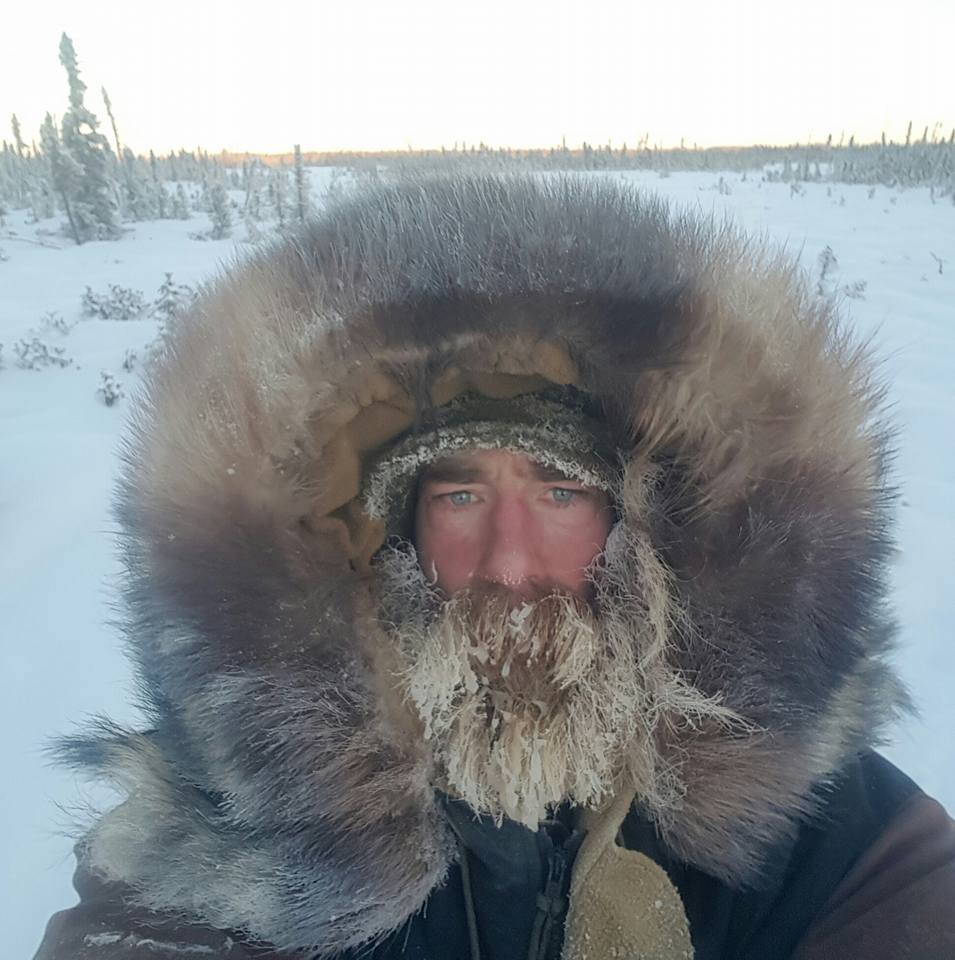
Just 55 minutes ago, New Yorker Peter Reuter and more than 70 other mushers began their journey in the famed Iditarod dog sled race across the frozen Alaskan tundra.
At the start of the race more than 10 teams had already withdrawn from the race for various reasons.

(Courtesy Peter Reuter/Facebook)
This year, Reuter, of Lake Placid, NY, will lease dogs from Cook Inlet Kennels’ owner Dean Osmar, winner of the 1984 Iditarod.
“Nutrition and exercise are critical to the dogs’ performance in the race,” said Reuter. “If anything is out of the equation, the dogs will suffer, including pre-race training and conditions.” During the race, the dogs eat hundreds of pounds of salmon, beef and chicken; they need more than 10,000 calories during the 24-hour race period, and they are fed every two hours during the race.
Reuter says the dogs are fed according to the conditions and temperatures. If the temperatures are mild, the dogs eat more salmon; if the temperatures drop, the dogs eat more chicken and turkey skins for a higher fat diet.
“I’m constantly monitoring the dogs and their vet care, paying attention to their weight, hydration and the condition of their feet,” said Reuter.
The dogs, both male and female, range in age mostly from just under three years old and as old as nine years old, although Reuter said he has an 11-year-old dog that has finished the Iditarod seven times.

(Courtesy Peter Reuter/Facebook)
“There’s a bond that develops between the musher and the dogs too,” said Reuter. “It’s a gratifying thing to see these dogs respond to me; if a dog doesn’t trust you, he isn’t going to work for you.”
Several weeks before the start of the Iditarod, Reuter said he had eight dogs that could potentially be his lead dogs to start the race.
“The lead dog’s disposition affects the whole team,” he said. “You don’t want to ask too much from each dog.”
He said each dog on his team has a specialty strength along the course. One of his dogs is really great as a lead dog on trails and during storms, but he knows that same dog would not be good during the ceremonial start of the race with so many distractions and such high attention on the sleds and dog teams.
Reuter explained that some of the best dogs for running are Alaskan huskies, Siberian huskies, Samoyed and malamutes.
“Pure bred dogs aren’t built for this work,” he said. “It’s the old village dogs, the big-boned ones with heavy, double coats and high metabolisms that are best.”
Reuter yields to his dogs as being “the best athletes on the planet” although he said, “mushers are pretty darn tough, too.”
Overall he said it’s the speed and endurance, optimal performance that he’s looking for in his dog team.

“So, it’s just me and the dogs out there,” said Reuter, who started training more than 30 dogs leading up to the race but will choose the best 16 to start. “I can drop dogs, but I cannot add [any].” The musher and his dogs are expected to complete the course unassisted. The musher is the only person allowed to feed or approach the dogs for any reason. No one can help manage the dog team, with the exception of a case such as the sled breaks or a dog gets loose from the pack. Then, and only then, can another musher stop his team to assist the team in crisis.
There are 20 checkpoints along the route, a sort of pit stop and safety check for both, the musher and the dogs. It’s man and dog against the elements.
Reuter said he’ll have his supplies staged throughout the checkpoints along the 1,000-mile course.
With an average cost of $60,000 for one team, Reuter relies on sponsors for funding his race.
Along this solitary journey, Reuter said his essentials for the Iditarod include: an ax, snowshoes, a cooker (to heat water for dog food), enough fuel for his meals, emergency food for one day (in case he is stranded), dog booties to keep the dogs’ feet protected from the terrain and elements, proper clothing for the extreme elements, a vet kit for the dogs, a first aid kit for himself, a sled repair kit (hose clamps, nuts, bolts, duct tape), and an extra pair of quick-change plastic runners. Reuter explained the need for multiple sets of sled runners to combat the drastic change in temperature and terrain.
“I need different composites for different temperatures,” said Reuter. The sled performs differently on top of freezing ice than it does over soft, mushy snow.
Although Reuter has been running dogs since the mid-1980s, this is his first run in the Iditarod. He began running dogs at Thunder Mountain Sled Tours on Mirror Lake in downtown Lake Placid for tour company owner John Houghton.
“Lake Placid is an ideal place for running dog teams,” said Reuter. “It’s like six million acres and only 100,000 full-time residents, a small community, but it’s filled with people who run dogs.”
Over the past 10 years Reuter’s love of running dogs morphed into racing. And when Reuter isn’t training for the Iditarod, he’s still running dogs with (Mitch) Seavey’s IdidaRide Sled Dog Tours in conjunction with Alpine Air Helicopter Tours.
Check out Long Island Weekly’s preview of the race.
Visit the Iditarod’s website to follow Reuter and the other teams to the finish line.



































